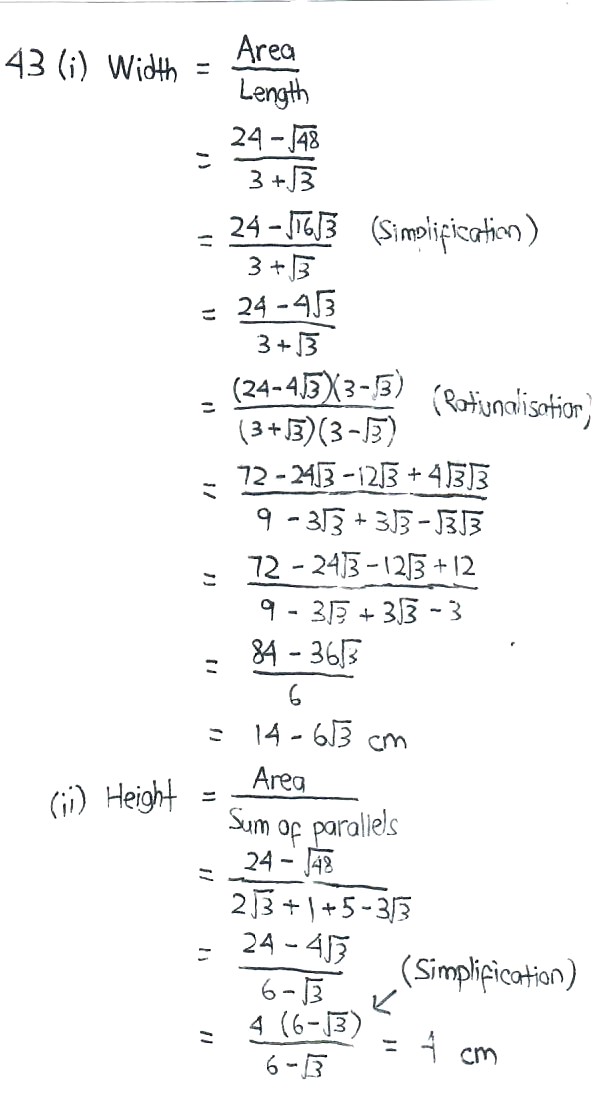Eric Nicholas K's answer to James's Secondary 4 A Maths Singapore question.
done
{{ upvoteCount }} Upvotes
clear
{{ downvoteCount * -1 }} Downvotes
For (i), it is important to be able to express a surd as a product of two surds, which in this case would be sqrt 48 = sqrt 16 x sqrt 3. Now the numerator and denominator only have sqrt 3 as surds, so computation becomes less difficult than before. Now the rest if using the technique of rationalisation.
For (ii), you may be inclined to also do rationalisation, but if you are able to simplify an expression, strive to do so first. Sadly there is no bonus or stylish marks for using a more difficult method to solve the same problem.
For (ii), you may be inclined to also do rationalisation, but if you are able to simplify an expression, strive to do so first. Sadly there is no bonus or stylish marks for using a more difficult method to solve the same problem.
Date Posted:
5 years ago
To add to my point, rationalisation involves introducing a term called 'conjugate' to eliminate the surds. Conjugate is kind of a 'partner' term for a specific expression.
For example, let me use the letter i to denote a random surd.
The conjugate of 3 + 2i is 3 - 2i. Well, -3 + 2i is also possible, but not commonly used.
The conjugate of 5 - 4i is 5 + 4i.
The conjgate of 7 - 2i is 7 + 2i.
The conjugate of 839189 + 13984i is 839189 - 13984i.
And so on.
As you can see, in conjugate pairs, exactly one of the signages are opposite to each other. As a convention, we let the surd in a conjugate pair be of opposite signs to each other.
Well if there are two surds involved, let's call them i and j, the process is the same. Exactly one of the signages changes.
The conjugate of 6i + j is 6i - j.
The reason why we introduce conjugates is that the product of a conjugate eliminates any square root seen (assuming we do not see weird things like the square root of i and so on), by virtue of the expansion (a + b) (a - b) = a2 - b2, and you know that squares and square roots battle each other. It's just to ensure that the denominator is free of square roots.
Hope the above helps.
For example, let me use the letter i to denote a random surd.
The conjugate of 3 + 2i is 3 - 2i. Well, -3 + 2i is also possible, but not commonly used.
The conjugate of 5 - 4i is 5 + 4i.
The conjgate of 7 - 2i is 7 + 2i.
The conjugate of 839189 + 13984i is 839189 - 13984i.
And so on.
As you can see, in conjugate pairs, exactly one of the signages are opposite to each other. As a convention, we let the surd in a conjugate pair be of opposite signs to each other.
Well if there are two surds involved, let's call them i and j, the process is the same. Exactly one of the signages changes.
The conjugate of 6i + j is 6i - j.
The reason why we introduce conjugates is that the product of a conjugate eliminates any square root seen (assuming we do not see weird things like the square root of i and so on), by virtue of the expansion (a + b) (a - b) = a2 - b2, and you know that squares and square roots battle each other. It's just to ensure that the denominator is free of square roots.
Hope the above helps.


